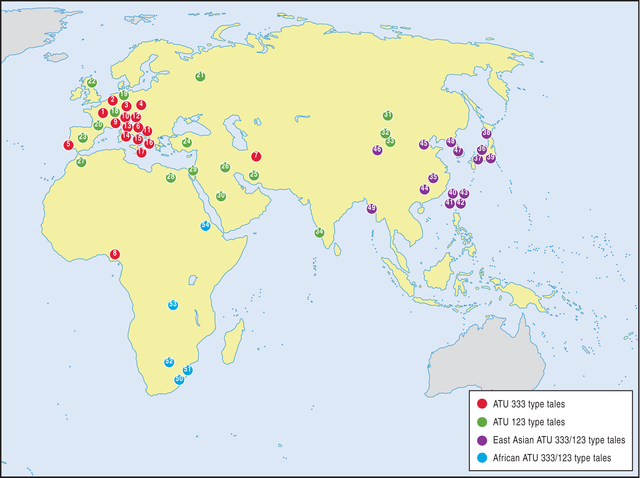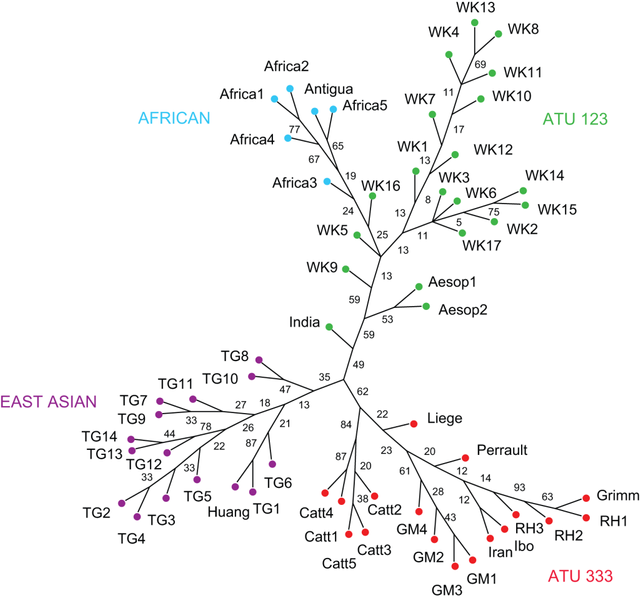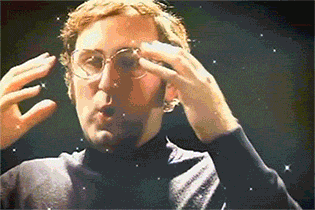Little Red Riding Hood's phylogenetics - Biology working for literature
Folkloric tales are not usually exclusive to one culture. It is totally normal to observe several variations of it that spread all over a continent (or the globe!). On other cases, two tales may be variations of the same original one that with time, acquired thir own character.

Little Red Riding Hood, 1890, by George Frederic Watts. - Source in image.
It is not amazing that popular tales can have statistic analysis applied to them, the same ones that were developed to rebuild the species' biologic evolutive history, and this way, correlate the familiar links from a tale to another one; understanding if they have a common root.
There's nice examples of this methodology being applied, one of them was made over "Little Red Riding Hood" and "The Wolf and the Seven Young Kids". The first one was coded with the "Aarne-Uther-Thompson (ATU)" system as ATU 333, the second one as ATU 123, there's specialists that believe that they both may be variants of the same story.
This research also analyzes other popular tales that are considered ATU 333 variants, pretending to link the relation between them all, either ATU 333 or ATU 123.
This studies are based on the characterization of different versions paying special attention to the elements that are contained within them (victim's identity, scenario, end of story...), as if these elements were part of a species that evolved to what we know today. After all, the differences in those tales appear because they were transferred orally for generations, pushing in several adaptations, errors or "upgrades". This way, the variations become larger, creating a whole new tale... But sharing common elements that are hard to remove from the context.

Map that displays the origin of different observed variants. - Source in image
The author of this study uses 3 different kinds of analysis: cladistic, bayesian, and nearest neighbor, all three of them return very similar results.
In one side, different versions of the African versions of the tale, right next to the European ones (WK, Wolf & Kids). On the other part there's an Asiatic version of it while there's a third grouping for the classic tale we know under different names: "(Little) Red Riding Hood", "Catterinella" and "Grandma's tale" (Please, Italians and Germans, forgive me If I mistranslated that).

Bayesian hierarchical grouping. - Source in Image
If you're interested in this wonderful way of reapplying methods across sciences go take a look in here. Using biology to infer the origin on a tale, simply blew my mind.

a great post @renzoarg, good luck guys
it is very interesting to consider the common links between folk tales and ancient wisdom too - it shows a lot of unexplainable links in the past - i will follow you now
This post has received a 1.92 % upvote from @booster thanks to: @renzoarg.
We've actually used these methods to trace the age of some stories to potentially as much as 6000 years old!
Though it's probably just an amusing coincidence, it's certainly fun to compare that date to the age that fundamentalist Christians think the world is- also around 6000 years old.
Interesting. Would like to include this in our next Math magazine. You can see the current N.11 here. Thanks!
Do as you please, please refer to the original study as I did.